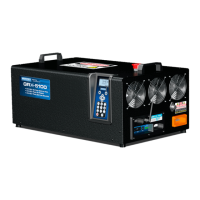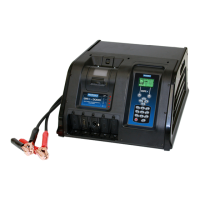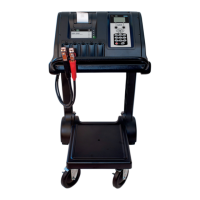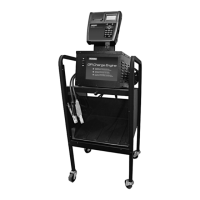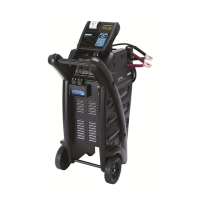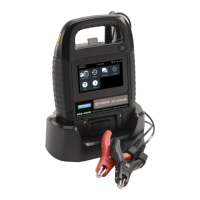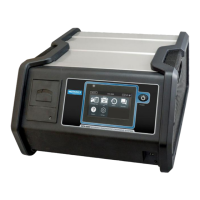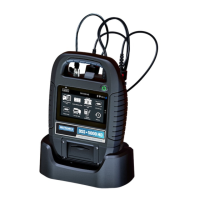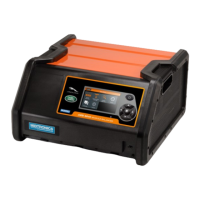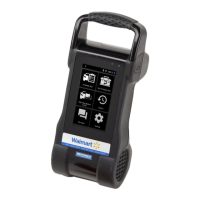6
Safety Guidelines GR8
Recommended minimum AWG* size for extension cords for battery chargers
AC input rating amperes AWG* size of cord
Equal or greater than: But less than:
Length of cord, feet (m)
25
(7.6)
50
(15.2)
100
(30.5)
150
(45.6)
8 10 18 14 12 10
10 12 16 14 10 8
12 14 16 12 10 8
14 16 16 12 10 8
16 18 14 12 8 8
*American Wire Gauge
3 Preparing To Charge The Battery
3.1
If it is necessary to remove the battery from vehicle to
charge it, always remove the grounded terminal from the
battery rst. Make sure all accessories in the vehicle are o,
so as not to cause an arc.
3.2
Be sure the area around the battery is well ventilated while
the battery is being charged. Gas can be forcefully blown
away by using a piece of cardboard or other nonmetallic
material as a fan.
3.3
Clean the battery terminals. Be careful to keep corrosion from
coming into contact with your eyes.
3.4 Add distilled water in each cell until the battery acid
reaches the level specied by the manufacturer. This helps
purge excessive gas from the cells. Do not overll. For a
battery without caps, carefully follow the manufacturer’s
recharging instructions
3.5 Study all battery manufacturer’s specic precautions such
as removing or not removing cell caps while charging and
recommended rates of charge.
3.6 Determine the voltage of the battery by referring to the
car owner’s manual and make sure that the output voltage
selector switch is set at the correct voltage. If the charger
has an adjustable charge rate, charge the battery initially
at lowest rate. If the charger has only one voltage, verify
that the battery voltage matches the voltage of charger.
For a charger not having an output voltage selector
switch, determine the voltage of the battery by referring
to car owner’s manual and make sure it matches the
output rating of the battery charger.
4 Grounding & Power Cord Connections
4.1 The charger must be grounded to reduce risk of electric
shock. The charger is equipped with an electric cord hav-
ing an equipment grounding conductor and a ground-
ing plug. The plug must be plugged into an outlet that is
properly installed and grounded in accordance with all lo-
cal codes and ordinances.
Hazardous voltage.
An improper connection can result in
electric shock
To avoid electrical shock or burn, never alter
the charger’s original AC cord and plug. Dis-
connect plug from outlet when charger is idle.
IF THE PLUG DOES NOT FIT THE OUTLET, HAVE A PROPER
OUTLET INSTALLED BY A QUALIFIED ELECTRICIAN.
4.2
This battery charger is for use on a nominal 220-volt circuit.
Hazardous voltage.
An improper connection can result in
electric shock
Before using an adapter be certain the center
screw of the outlet plate is grounded. The rigid
ear or lug extending from the adapter must be
connected to a properly grounded outlet. Make
certain it is grounded. If necessary, replace the
original screw that secures the adapter ear or
lug to the cover plate and make the ground
connection to the grounded outlet.
4.3 An extension cord should not be used unless absolutely
necessary. Use of an improper extension cord could result
in a risk of re and electric shock. If an extension cord must
be used, make sure:
1. The pins on plugs of the extension cord are the same
number, size, and shape as those of the plug on the
charger;
2. The extension cord is properly wired and in good
electrical condition;
3. The wire size is large enough for the AC ampere rating
of charger.
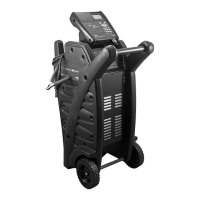
